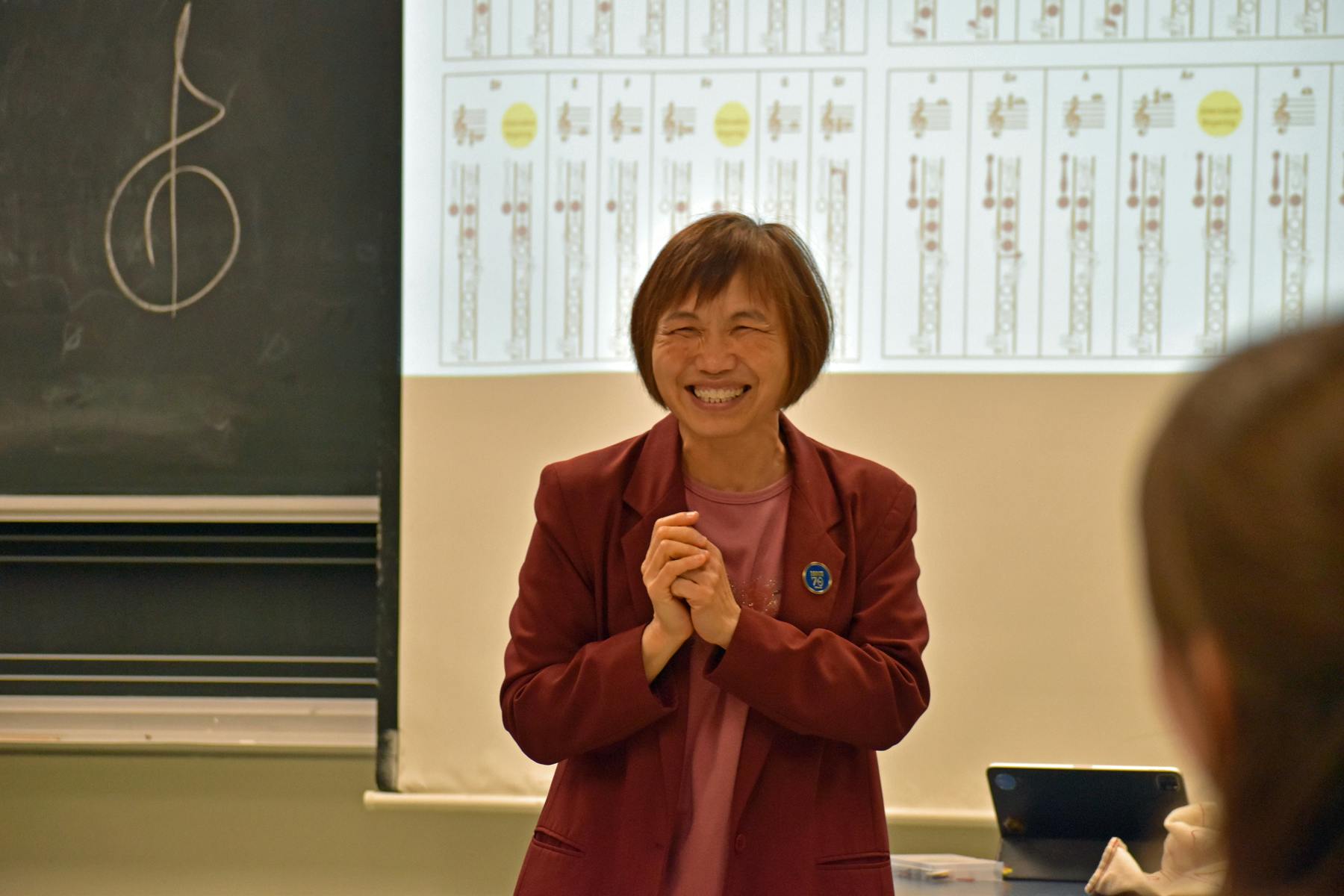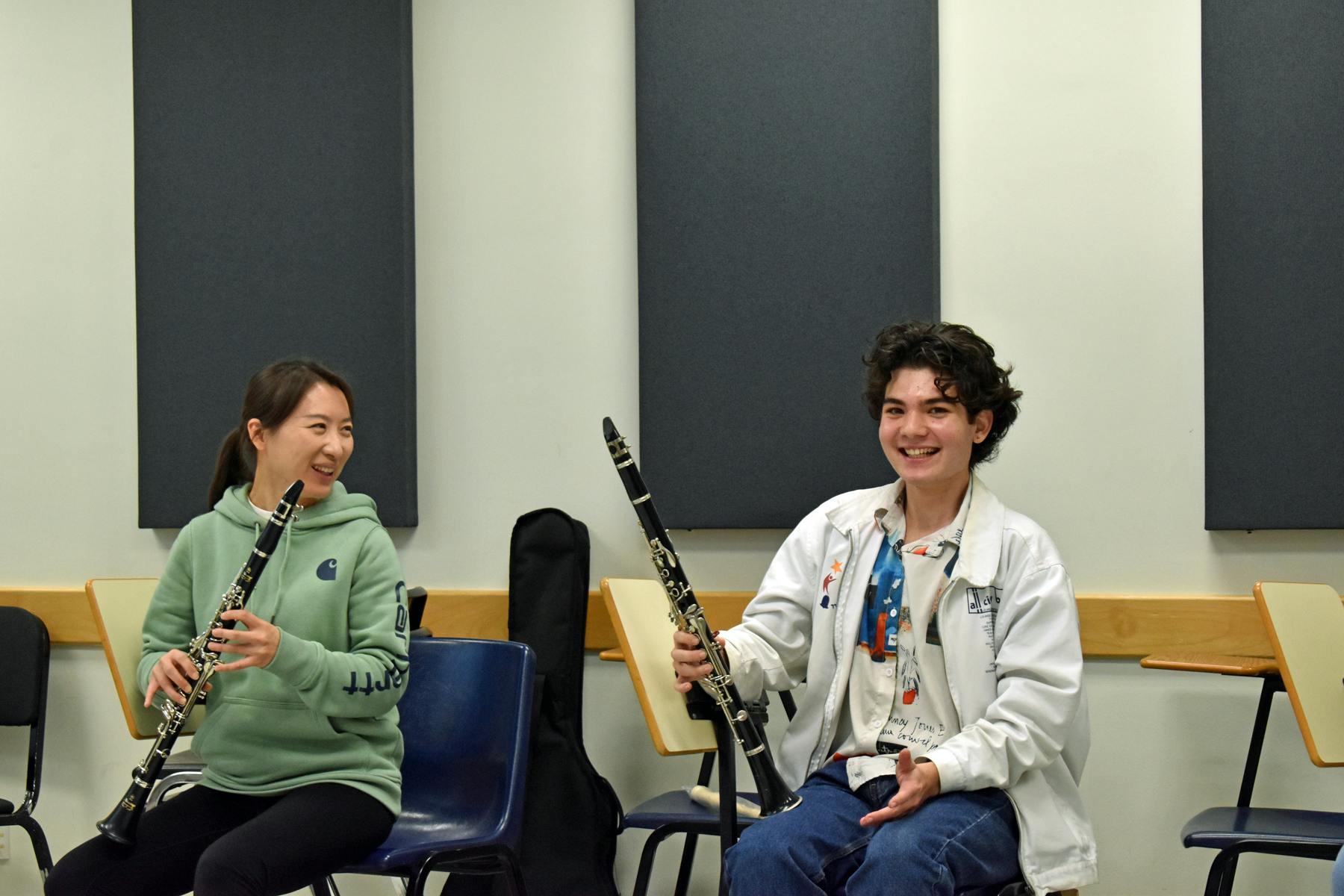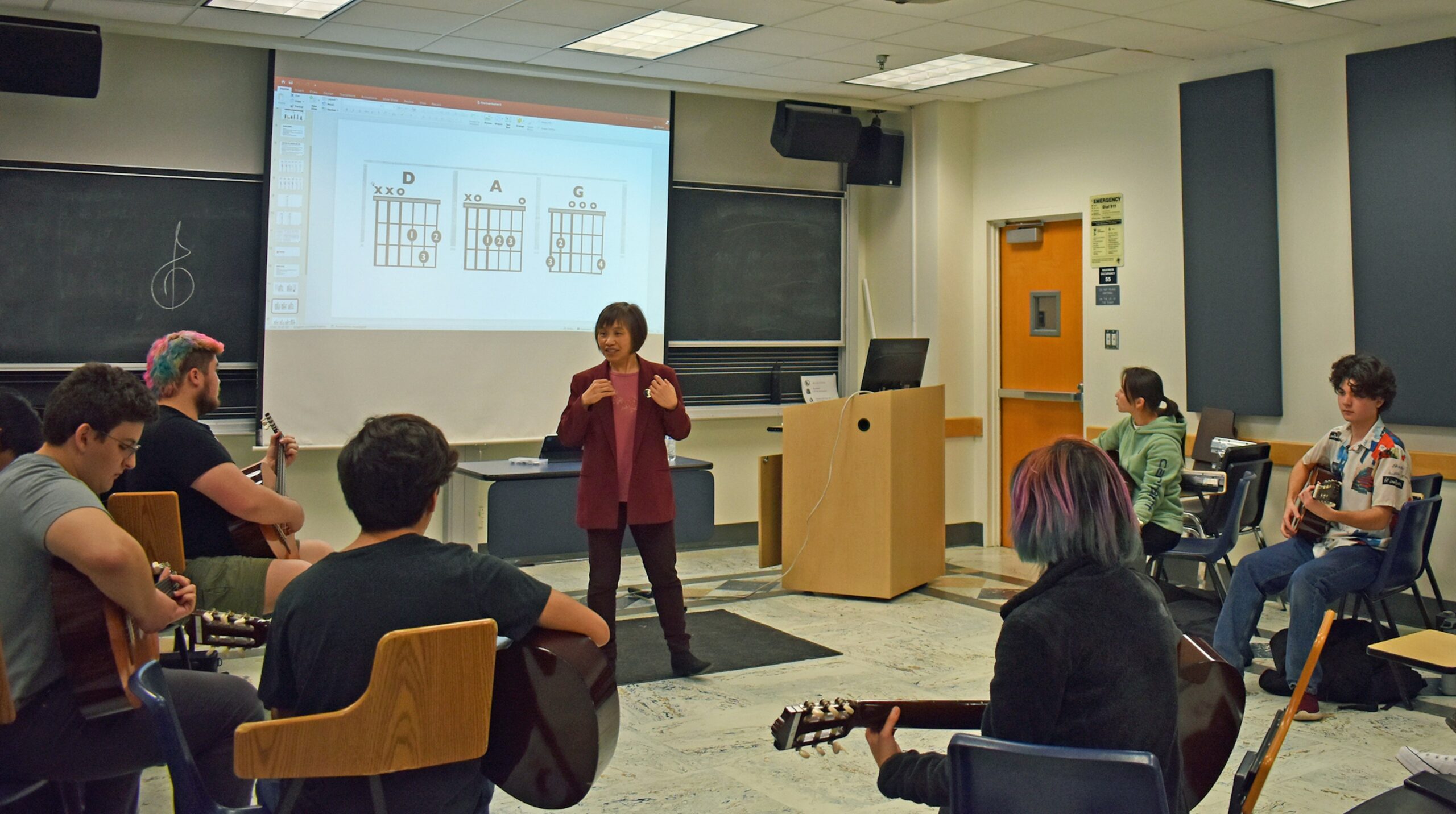The Joint Music Education Program is a partnership between the Teacher Education Program at UCLA Center X, and the UCLA Herb Alpert School of Music.
With the passing of Prop. 28, the already high need for music teachers in California schools is expected to grow. The UCLA Teacher Education Program (TEP) in Center X, collaborates with UCLA’s Herb Alpert School of Music (HASOM) to produce committed, high-quality music educators to fill that demand, with the only music education program at a public university in California, where it is possible to earn a teaching credential in a four-year undergraduate degree program.
Lily Chen-Hafteck, UCLA professor of music education, oversees the program from the HASOM side, working with Emma Hipolito, TEP director. Chen-Hafteck, who currently chairs the Music in Schools and Teacher Education Commission of the International Society for Music Education (ISME), says that the unique and rigorous program seeks applicants who are, “… strong musicians, have strong academics, and are passionate about teaching music and working with young people.”
“One of the objectives of TEP is to support novice teachers in acquiring the ‘knowledge, skills, and dispositions needed to provide rigorous academic content and high-quality learning experiences to K–12 students,’” says Hipolito. “The Joint Music Program embodies that mission. Music Education students continue to hone their own knowledge of music while simultaneously learning to teach. Under the leadership of Drs. Chen-Hafteck and (Joanna) Gamboa-Kroesen (UCLA assistant professor of music education), this program can serve as a model of rigorous teacher preparation, rooted in a deep knowledge of content and a culturally responsive approach to K–12 music curriculum.”

UCLA Professor of Music Education Lily Chen-Hafteck is a special assistant for curricular reform for the Herb Alpert School of Music, and chair of the Music in Schools and Teacher Education Commission of the International Society for Music Education.
Photo by Michelle Trevino
“There are a lot of requirements for receiving teaching credentials and so to be able to complete a BA in music education with a teaching credential in four years is very, very tough,” Professor Chen-Hafteck says. “This year, we have received 96 applications, and we’re going to accept around 15 students. We have auditions to assess how well they play their instruments or sing, plus music education interviews to evaluate their potential in teaching.”
Students have to meet high standards in order to be accepted into the Joint Music Education Program. Chen-Hafteck says that those who have entered the program are often considered among the most rewarding to teach by her HASOM colleagues.
“These are young people who have had a good experience in their music education and talk about how it has helped support them through difficult times,” she says. “They have had wonderful music teachers, and they want to be like [them] to help more students. Each year, the music education cohort are very close, because they are all passionate about teaching and helping others. I’ve heard about other majors where the students are very competitive, but in this group of music students, they have built a supportive community together, helping each other and appreciating each other’s unique capacities. My other music colleagues who teach both performance and music education students are often impressed by our music education majors, who are so strong in terms of their disposition and attitude towards learning.”
The Joint Music Education Program provides students with a California Subject Matter Waiver in music, and they complete their teaching credential during their fourth year of undergraduate studies. Professor Chen-Hafteck says that undergraduates declare this major upon entry to UCLA.

Siqi Zhuang and Julian Dohi (L-R), undergraduates in the Joint Music Education Program, learn to play and teach the clarinet to K–12 students.
Photo by Michelle Trevino
“There are some performance majors who may change majors or add a second major when they realize that they want to teach and our music education program is actually very interesting and rigorous,” she says. “The program is very well-designed and packed in all the requirements,” she says. “In the first two years, they have music theory and music history courses, performance ensembles, private lessons on their instruments or voice, in addition to their music education courses in learning approaches, vocal and instrumental music pedagogy. In the third year, they started some field experiences and in the final year, they do student teaching.”
Chen-Hafteck, who previously taught music education at Kean University before arriving at UCLA ten years ago, also serves as special assistant for curricular reform to Eileen Strempel, inaugural dean of the UCLA Herb Alpert School of Music. Professor Chen-Hafteck has been charged with starting a task force to put forth recommendations to align the school’s curriculum with EDI standards. Having taught a Fiat Lux seminar on “Celebrating Cultural Diversity of Immigrants through Music,” she says that, “It is important to allow students living in a multicultural society to study music of diverse cultures. A goal of the task force is to update the music curriculum that is culturally responsive to the student population.
“After two years of hard work with the task force, our curriculum now offers music theory and musicianship courses that are more inclusive of diverse musical styles, not just Western classical music,” says Chen-Hafteck. “There are so many ethnomusicology ensembles that are available in the School of Music, as well as a pop music ensemble in the Music Industry Program. I feel that participating in such diversifying musical experiences is important and should be supported. We are still working on updating the ensemble policy that will allow this.”
Professor Chen-Hafteck played the piano at a young age and began her teaching career as a high school music educator in her native Hong Kong. A Fulbright Scholar, she achieved her Ph.D. in music education from the University of Reading, U.K. and received postdoctoral research fellowships at the University of Pretoria, South Africa and the University of Surrey Roehampton, U.K. She says that her international experiences showed her that everyone is born with the musical abilities to learn any music just like the linguistic abilities to learn any language. It is very important to provide a nurturing environment at a young age so that children can develop their musical potential. Therefore, she was especially interested in teaching and researching early childhood music education.

Natalia Rael and Johannes Eberhart (L-R) are undergraduates in UCLA’s Joint Music Education Program who aspire to become music educators.
Photo by Michelle Trevino
“It’s so important to provide pre-schoolers with quality music education,” Professor Chen-Hafteck says. “A lot of times people tell me that, ‘Oh, I can’t sing. I can’t dance.’ And why? When we were born, we could all sing and dance and move to music, but throughout the years, we were somewhat discouraged. A teacher may tell you that you sing out of tune, and you never want to sing again.
“This is actually bad music education. There are some schoolteachers who only want the best ensemble. They weed out students, and those students are deprived of the joy of music making. And so, if from early childhood you were given the opportunity to receive a good music education, that would give you the seeds to enjoy music making. I’m not talking about singing or playing like professional musicians… but music for everyone… for all people, because music should be something that we can all enjoy.
“When I work with my students, I tell them they are capable of [giving their students] the best music education. Whether they can help students learn depends on how they teach and design activities that are appropriate to the age level of their students. Little children are capable of enjoying complex music and complex rhythms, as long as the activities are appropriate to them. For instance, they love moving to music and so movement activities will be best for young students to learn music.”
Professor Chen-Hafteck hopes that the infusion of funding from Prop. 28 will serve to fill the gap of well-trained music educators in California.
“There are just not enough music teachers,” she says. “Our students have been getting jobs before they graduate, there is such a high demand. And our students are so good, we prepare them very well. I wish our program can be bigger, and we can have more of my students going out to make a difference in the world.”
